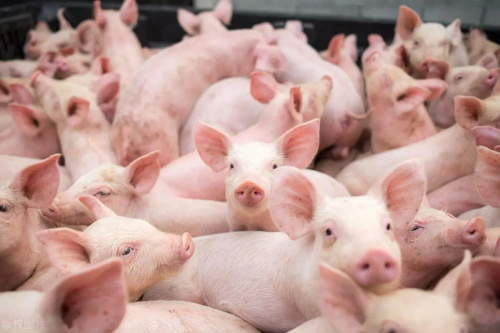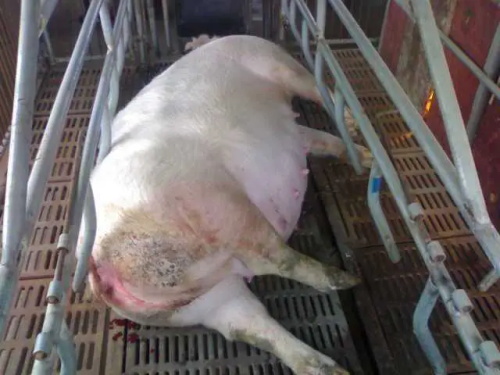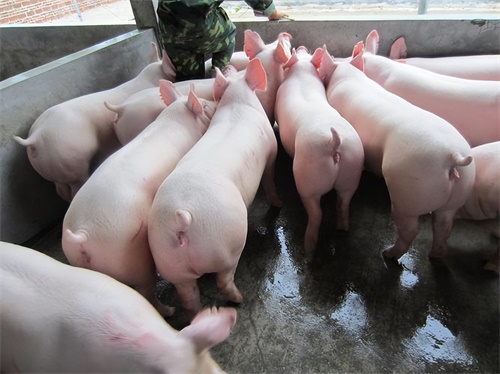As a swine producer, ensuring the health and productivity of lactating sows and weaned piglets is vital for maintaining herd performance and economic returns. The first few weeks post-parturition and post-weaning are biologically and environmentally sensitive periods in swine production. While traditional methods like observation and physical examination remain essential, Veterinary ultrasound—particularly B-mode ultrasonography—has emerged as a powerful tool for managing sow lactation and piglet development more precisely. In this article, I will explore how veterinary ultrasound enhances management practices in lactating sows and weaned piglets, drawing from global practices and research findings.

Supporting Sow Health During Lactation
Monitoring Sow Body Condition Through Ultrasound
In the farrowing house, one of the most critical parameters for sow health and productivity is body condition—especially backfat thickness. Excessive weight loss during lactation can reduce future reproductive performance, while over-conditioning may lead to farrowing difficulties or reduced feed intake. In many commercial farms across Europe and North America, ultrasound is routinely used to measure backfat at the P2 position (last rib, 6.5 cm off midline) to assess body reserves. Based on ultrasound readings, feeding programs can be tailored to ensure sows remain within optimal fat thresholds (typically 16–20 mm for commercial breeds), avoiding both undernourishment and overfeeding.
Preventing Mastitis and Udder Health Problems
Mastitis-metritis-agalactia (MMA) complex is a major health concern in lactating sows. Regular manual palpation of the udder helps detect early signs, but combining it with ultrasonographic screening offers more sensitivity. Using veterinary ultrasound, farmers can detect subclinical mastitis, monitor mammary gland integrity, and distinguish between inflammatory and non-inflammatory swelling. In advanced systems, Doppler ultrasound even enables blood flow assessment, allowing early diagnosis before visible signs emerge. In Danish farms, this practice has significantly reduced sow mortality and piglet starvation rates.
Ensuring Proper Hydration and Milk Output
Lactating sows require substantial water intake—up to 25–30 liters per day—to support milk production. Automatic drinkers and monitoring systems help, but ultrasound offers an additional benefit by indirectly assessing milk production through imaging of mammary gland tissue density and alveolar development. When combined with observations of piglet growth, this provides real-time insight into lactation sufficiency, allowing farmers to act quickly if deficiencies are detected.

Managing Weaned Piglets with Precision
Environmental Sensitivity and Thermal Regulation
Weaning is a stressful transition that affects piglets' physiology and immunity. Their sensitivity to temperature changes can influence feed intake, weight gain, and disease susceptibility. Research from the U.S. and the Netherlands has shown that piglets exposed to drafts or improper temperatures in the first 10 days post-weaning suffer higher morbidity. A novel application of ultrasound in modern pig barns is the use of superficial scans to monitor piglet hydration status and fat reserves. For example, echo-intensity patterns in subcutaneous tissue correlate with hydration levels and stress.
Advanced Welfare Checks Using Ultrasound
Veterinary ultrasound allows for early screening of lymph node enlargement, bowel wall thickening, or abnormal fluid accumulation in piglets—signs that may indicate gastrointestinal or systemic infections. This is especially valuable in large-scale operations where routine visual checks may miss early-onset disease. On leading Canadian pig farms, portable ultrasound is part of the routine health protocol during the weaning period, offering a non-invasive method to track piglets' immune status and internal health.
Ensuring Sanitation in Nursery Pens
Hygiene in nursery units is foundational to piglet performance. Thorough cleaning and disinfection of pens, feeders, ceilings, fans, and water systems are standard—but integrating ultrasound adds a layer of biological confirmation. By performing random scans of recently placed piglets for signs of intestinal inflammation or fluid retention, producers can validate the effectiveness of their biosecurity protocols. A study in Germany showed that such ultrasound-based feedback led to improved compliance with cleaning routines and a 12% reduction in post-weaning diarrhea incidence.
Preventing Chill Stress and Draft Exposure
One often overlooked factor in piglet growth is airflow. A mere 15 cm/s air draft can cause a perceived temperature drop of 4°C, negatively affecting feed efficiency and increasing stress. In Japan, farms have started integrating infrared thermal imaging with ultrasound tissue hydration scans to evaluate both external and internal temperature effects. These technologies allow fine-tuning of heating systems and pen design to mitigate chill stress and maximize energy utilization for growth.

Data-Driven Feeding Strategies
Tailored Nutrition for Lactating Sows
Feeding strategies during lactation vary widely based on litter size, sow parity, and individual health status. By using ultrasound to monitor backfat loss daily or weekly, nutrition plans can be individualized, helping ensure that sows are neither overfed nor catabolizing excessive muscle tissue. This not only improves lactation performance but also reduces rebreeding intervals. According to a study from Iowa State University, farms using ultrasound-guided feeding protocols experienced 0.3 more piglets per sow per year due to improved post-weaning recovery.
Optimizing Creep Feed and Transition Diets
Creep feeding is crucial to smoothing the dietary transition for piglets. However, over- or under-feeding can hinder gut development. Ultrasound imaging can assess intestinal wall thickness and stomach contents, providing real-time insights into digestive adaptation. In high-performance farms in the UK, weekly piglet scans are conducted during the first 21 days post-weaning to optimize feed formulation and delivery intervals. This practice has been linked to more consistent weight gains and lower feed conversion ratios (FCRs).
Global Perspectives and Adoption
Across Europe, North America, and increasingly in Asia, veterinary ultrasound has become a standard part of integrated herd health and management systems. Its adoption is driven by several factors:
Labor efficiency: A single technician can screen dozens of sows or piglets per hour.
Non-invasive safety: No need for sedation or restraint.
Reproducibility: Digital image storage enables longitudinal health tracking.
Regulatory compliance: In many welfare-conscious markets, ultrasound data helps prove adherence to animal health standards.
Future applications include machine learning-assisted ultrasound image analysis and automated integration with farm management software to flag abnormal patterns without human intervention.
Conclusion
Veterinary ultrasound is transforming the way swine producers manage lactating sows and weaned piglets. From ensuring sow body condition and udder health to monitoring piglet immune development and gut health, this non-invasive tool provides real-time, reliable insights that improve welfare and productivity. When used in conjunction with traditional husbandry and environmental controls, ultrasound helps producers make smarter, faster decisions that benefit the entire herd.
In the coming years, its role is expected to grow even further as technology becomes more accessible and integrated into everyday farm routines. Whether you're running a small operation or a large-scale facility, investing in ultrasound technology can offer a clear return through improved efficiency, healthier animals, and better performance.
tags:
Text link:https://www.bxlultrasound.com/ns/818.html


